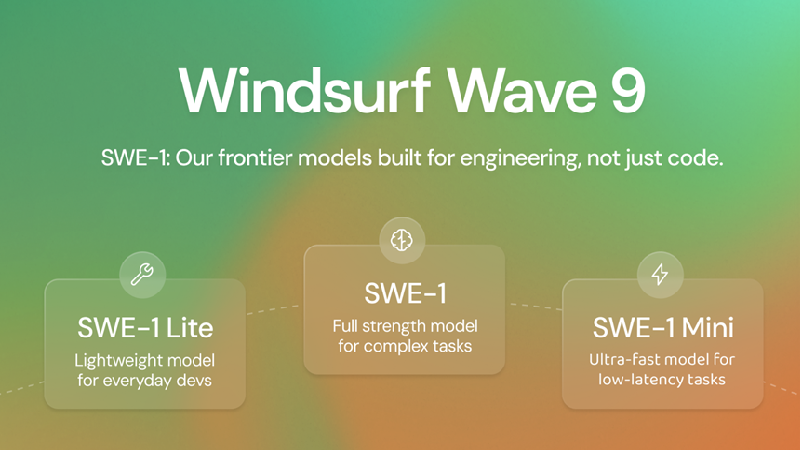17-May-2025 :
Windsurf has launched SWE-1, its first suite of in-house AI models specifically tailored for software engineering workflows. The SWE-1 family consists of three models: SWE-1 (full-size, for paid users), SWE-1-lite (replacing Cascade Base as the default for all users), and SWE-1-mini. These models are designed not just for code generation, but for managing the entire development cycle.
According to Windsurf, internal benchmarks show that SWE-1 ranks just behind frontier models like Claude 3.7 Sonnet, while outperforming all non-frontier and open-weight competitors. SWE-1 models are trained to function across multiple user environments—including IDEs, terminals, and browsers—thanks to their ability to understand development context beyond static prompts.
What makes SWE-1 unique is its 'flow awareness' system, which establishes a synchronized development timeline between human developers and the AI. This allows for seamless handoffs, real-time code refinement, and improved traceability across tools. The models can pick up where the user left off and proactively assist without constant re-prompting.
Traditionally, platforms like Windsurf have layered third-party models beneath their tooling. This marks a significant strategic shift, signaling Windsurf’s ambition to own both the user interface and the intelligence layer of AI software development. The timing is notable—just days after reports of Windsurf’s $3 billion acquisition by OpenAI—suggesting this release may play a larger role in OpenAI’s evolving AI coding agent stack.
By delivering highly specialized, full-stack AI models for software engineering, Windsurf is positioning itself as a leader in agent-driven development workflows. The SWE-1 release could also open the door for tighter integration with OpenAI’s Codex agent systems or developer platform ambitions.
